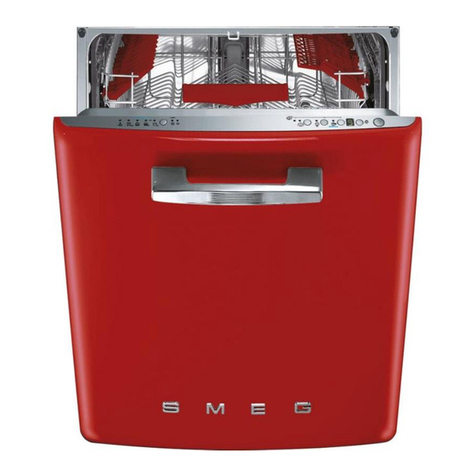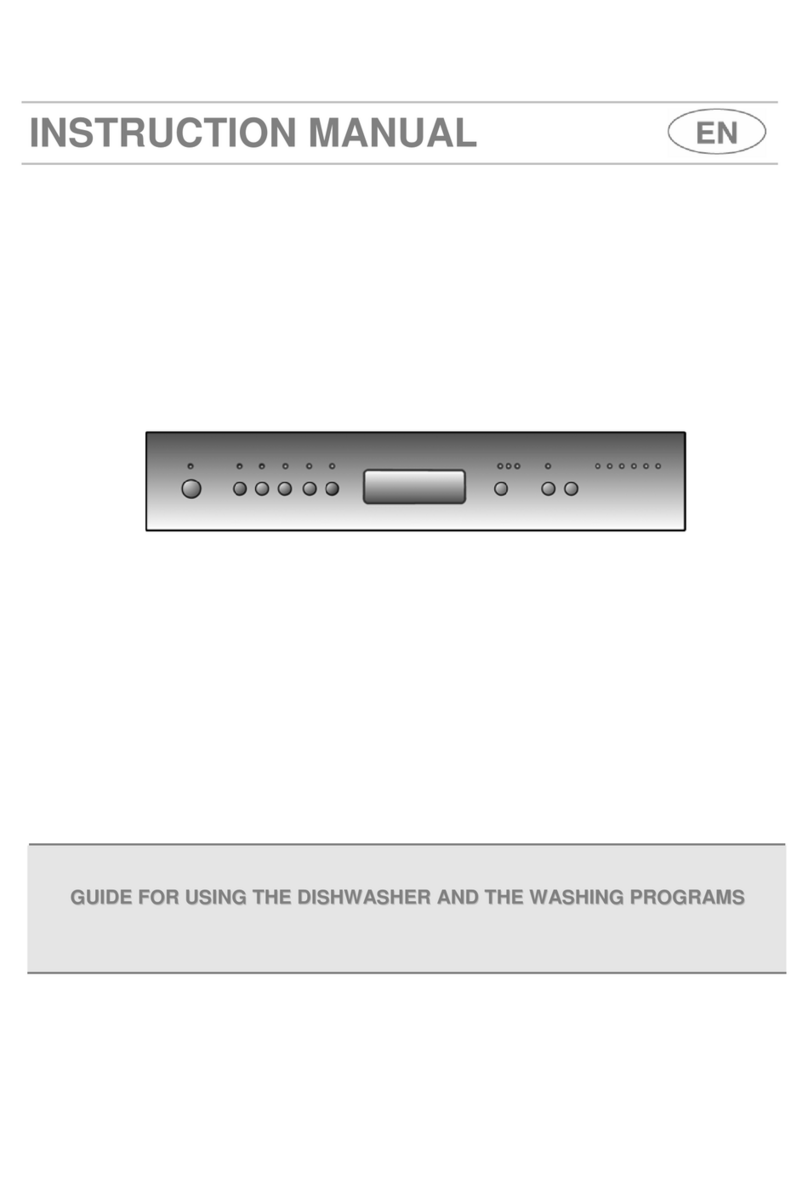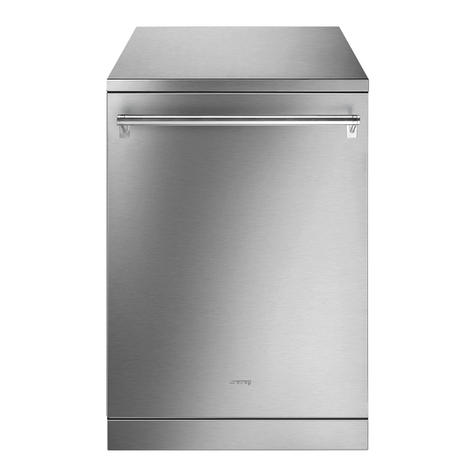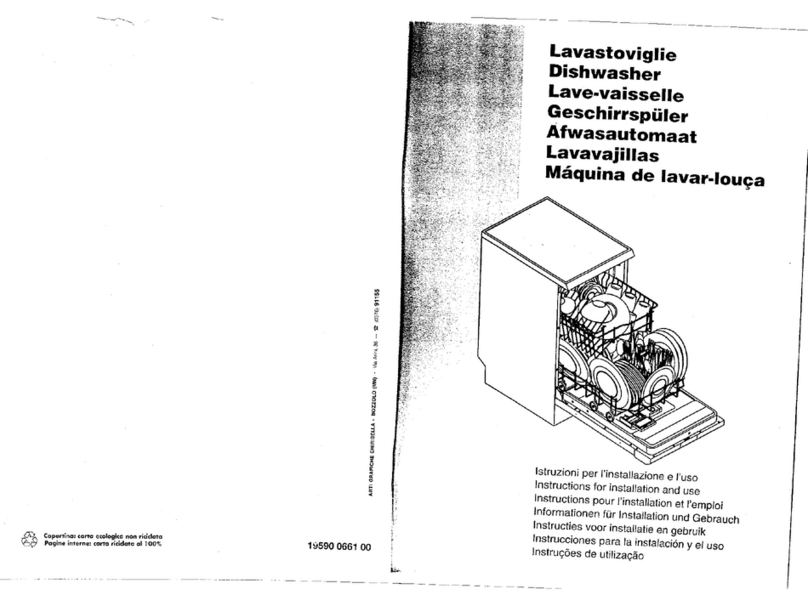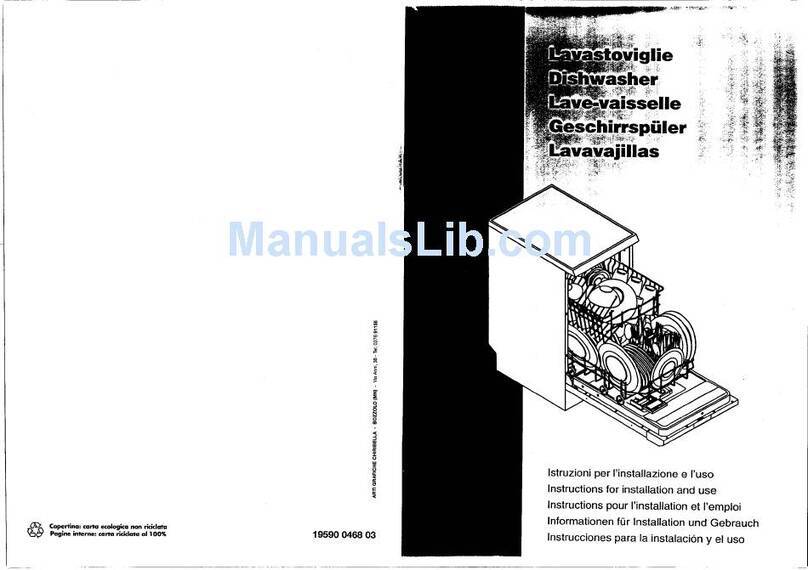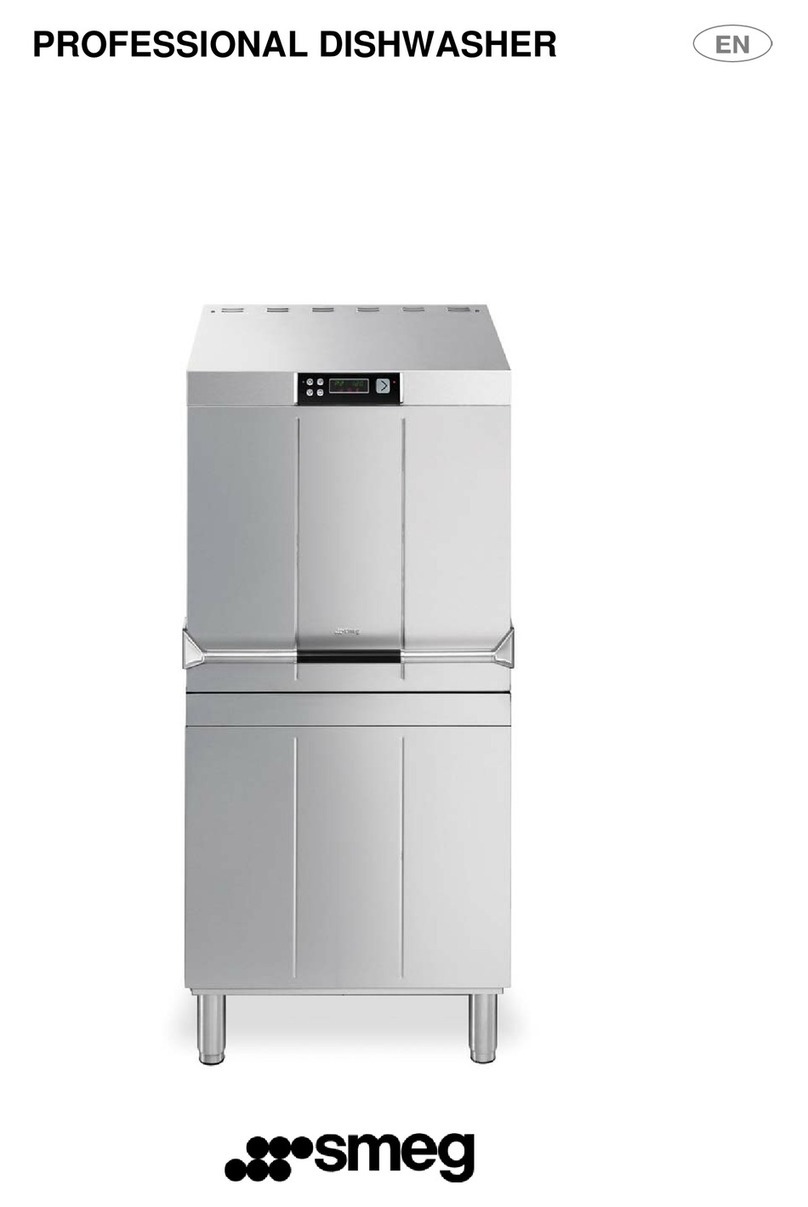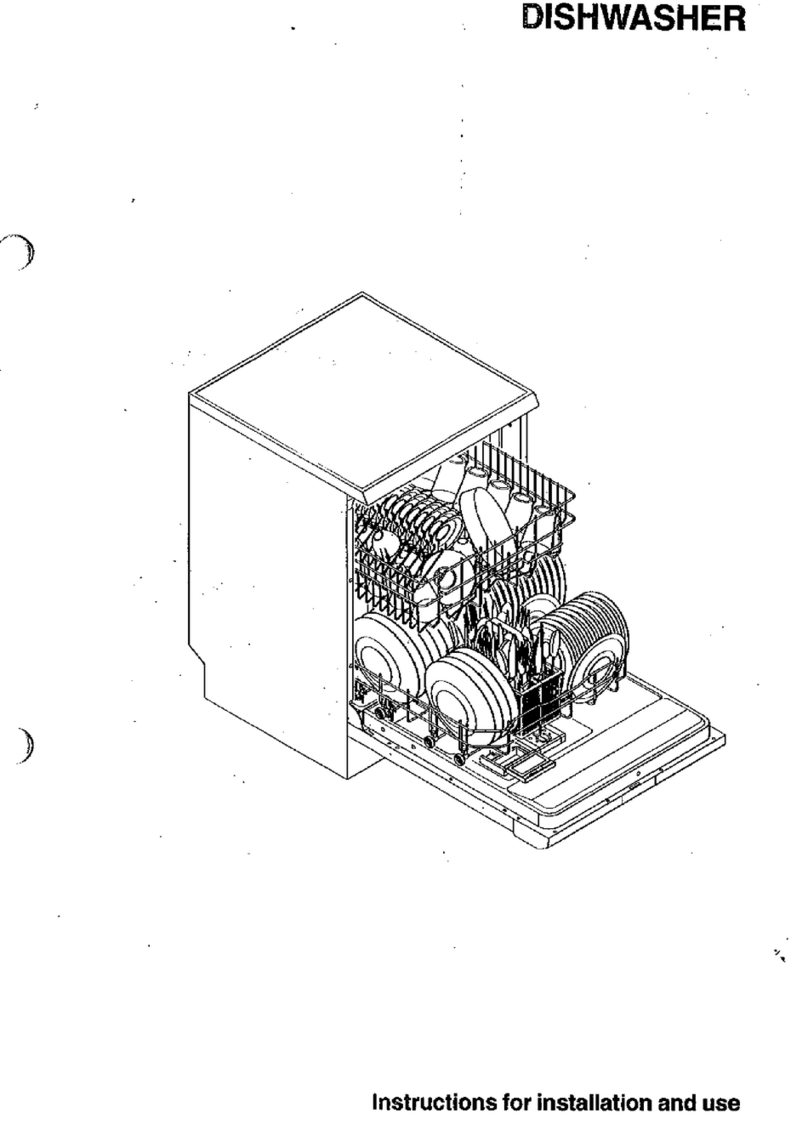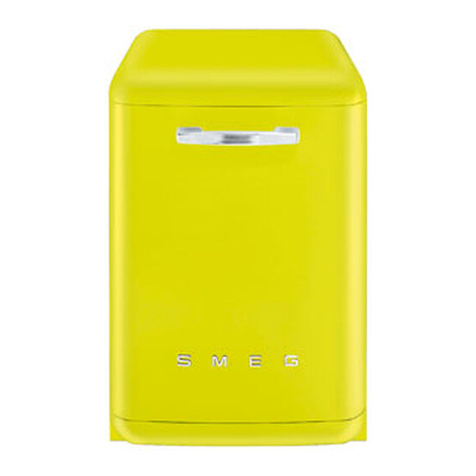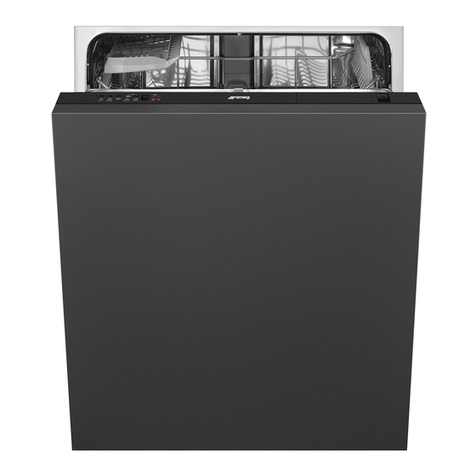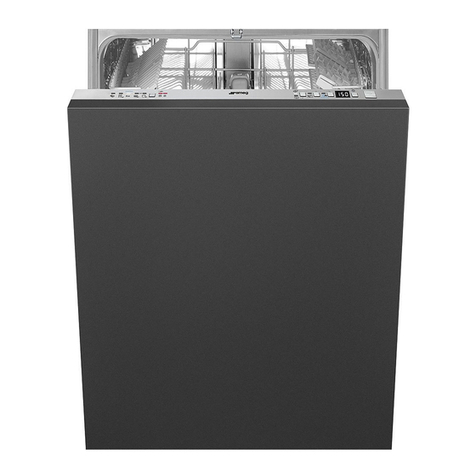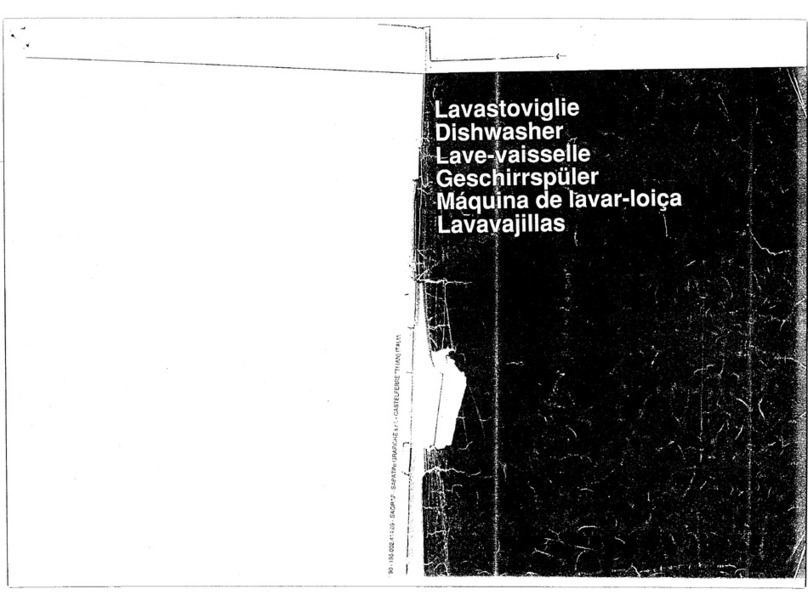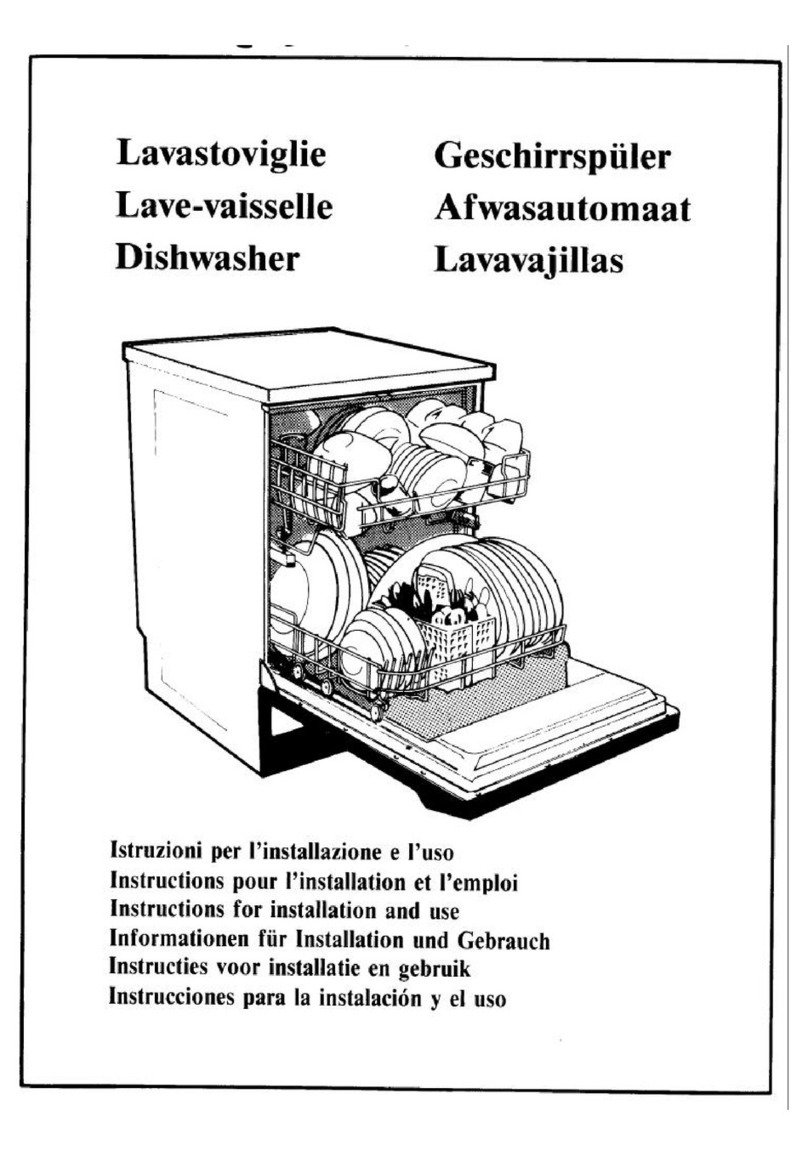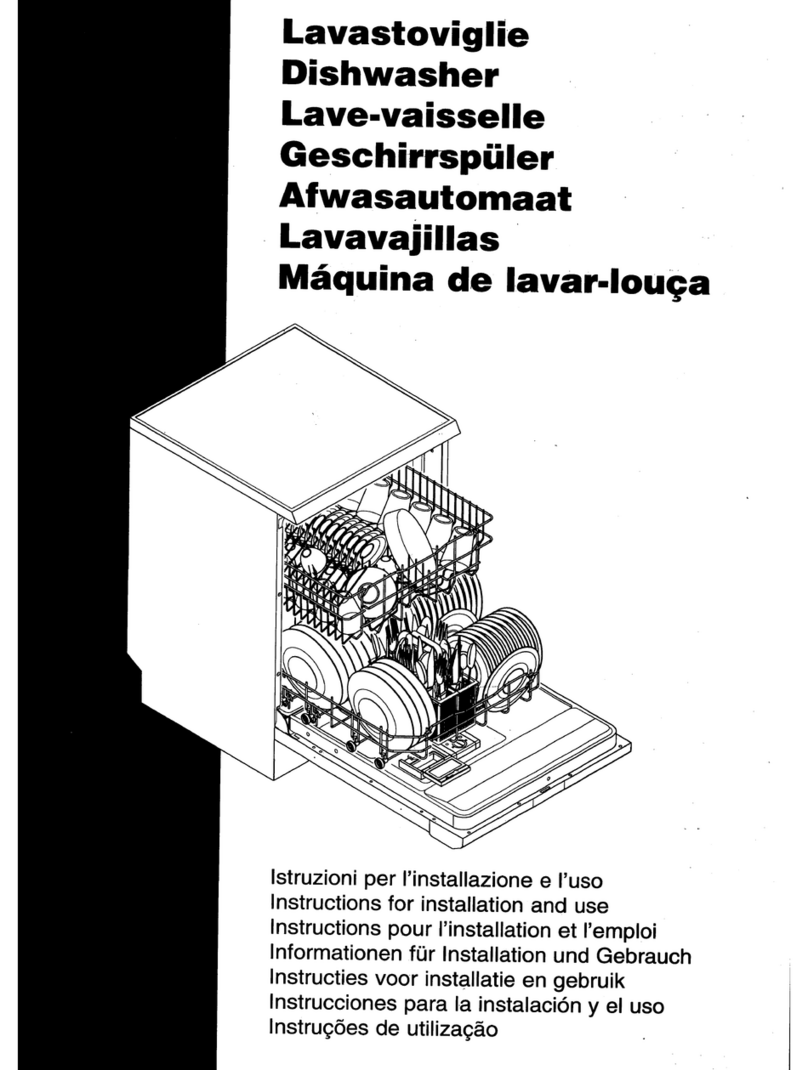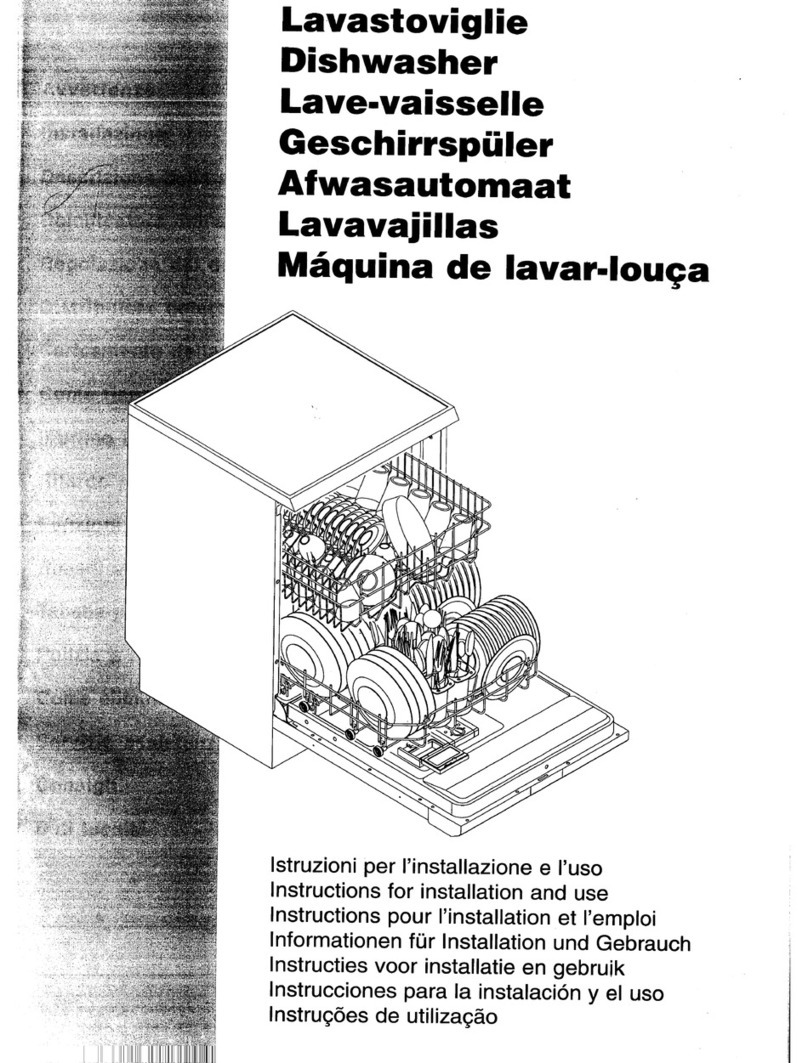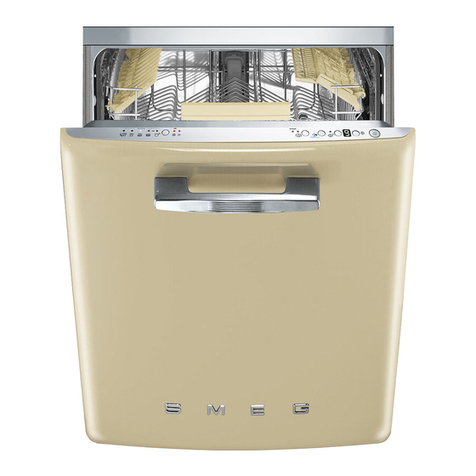10
corners, cover. Wooden and cardboard components can be disposed of in accordance with the relevant
regulations.
4.3 Installing the appliance
The dishwasher must be installed by an authorised technician. Do not install a dishwasher which has been
damaged during transport. Do not install the dishwasher near to sources of heat (e.g. gas burners, stoves,
fireplaces, etc.) since they can damage it. When installing the dishwasher in a compartment next to one or
more other appliances, it is essential to comply with all the recommendations provided by the appliance’s
manufacturer (clearances, installation procedures, etc.). If the dishwasher is installed in a raised position,
make sure that the unit and dishwasher are installed properly and do not constitute a hazard. Do not install
the dishwasher in areas subject to freezing temperatures or at risk of explosion. Use only professional
furnishings and units in the vicinity of the dishwasher. Any other types of furnishing may be damaged.
Immediately after installation, test the appliance as instructed later in this manual. If the appliance does not
operate, disconnect it from the mains and contact your local service centre. Never attempt to repair the
appliance yourself.
4.4 Preliminary settings and adjustments
The electrical protection system must undergo a functional test before the appliance is put into operation. The
appliance must be installed and/or inspected by qualified staff, who will start it up for the first time and
provide the relevant operating instructions.
4.4.1 Opening the door
We consider the door opening procedure here to facilitate access to the interior of the machine.
The remaining controls are covered in the following paragraphs.
The machine is equipped with an automatic door lock.
Do not force the door open, rather proceed as follows:
Connect the machine to its power supply.
Hold the button marked On/Off down for 2 seconds to turn the machine on.
Press the Open door button: the machine beep when the signal is received; release the button and the
door will open of its own accord after a few seconds.
4.4.2 Manual door release
In case of malfunction or power failure, the door can be opened manually by using a screwdriver in the
opening mechanism; take care not to damage the dishwasher when doing so.
1. This can only be done with the machine in stand-by, not while a cycle is running.
2. Caution: before opening the machine manually, disconnect it from its power supply.
3. Insert the screwdriver into the bottom central hole in the control panel, as shown below.
4. Push the pin upwards until the mechanism releases.

